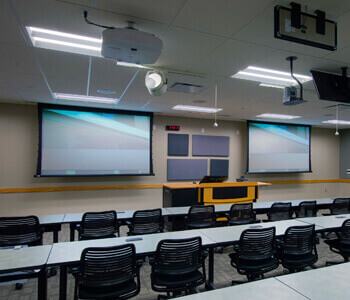Transforming Broadcasting through Innovative Sound via IP Solutions for a Integrated Future
Transforming Broadcasting through Innovative Sound via IP Solutions for a Integrated Future
Blog Article
The realm of media is experiencing a significant shift due to cutting-edge audio via IP (AoIP) solutions. These advancements are revolutionizing the way audio programming is created, distributed, and received. Audio over IP is defined as the method of sending audio signals over a computer system, using Internet Protocol (IP) instead of traditional analog methods. This transition not only improves the quality of audio transmission but also offers media professionals with more flexibility and authority over their programming.
One major benefit of audio over IP systems is its ability to connect multiple devices and systems seamlessly. Classic broadcasting frequently depended on complex cabling and tangible links, which could be burdensome and restrictive. With AoIP, broadcasters can easily connect mics, mixers, and other devices through a common network. This convergence allows for remote broadcasting and live transmissions from almost any location, making it simpler to connect with listeners across the world. As a consequence, broadcasters can react quickly to ongoing events and listener requests, leading to more dynamic and captivating programs.
Additionally, AoIP systems facilitates superior audio click here now formats that improve the listening experience. In contrast to conventional broadcasting techniques, which may compromise sound quality, audio over IP can maintain the integrity of the audio stream throughout the transmission procedure. This means that listeners can enjoy crisper and richer sound, regardless of whether they are tuning in via terrestrial radio, streaming online, or using portable devices. The capability to provide premium audio is especially important for music and discussion programs, where each detail matters to the audience.
Additionally, the adoption of audio over IP technologies can lead to cost savings for broadcasters. By leveraging existing network systems, companies can eliminate the need for expensive hardware and extensive cabling. This not only reduces initial costs but also lowers maintenance expenses over time. Media firms can distribute resources more efficiently, focusing on content creation and talent development. As a result, the entire media industry can gain from increased creativity and inventiveness, as financial resources are reallocated toward improving programming and interacting with listeners.
In conclusion, the shift towards audio over IP systems is changing the media landscape. By allowing seamless connections, enhancing audio quality, and reducing costs, AoIP is paving the way for a better integrated future in broadcasting. As broadcasters continue to adjust to these developments, they will be more prepared to meet the needs of their audiences, create compelling content, and remain competitive in an constantly changing industry. The future of broadcasting is bright, and audio over IP will play a key role in defining the manner in which we experience audio content in the future to follow.